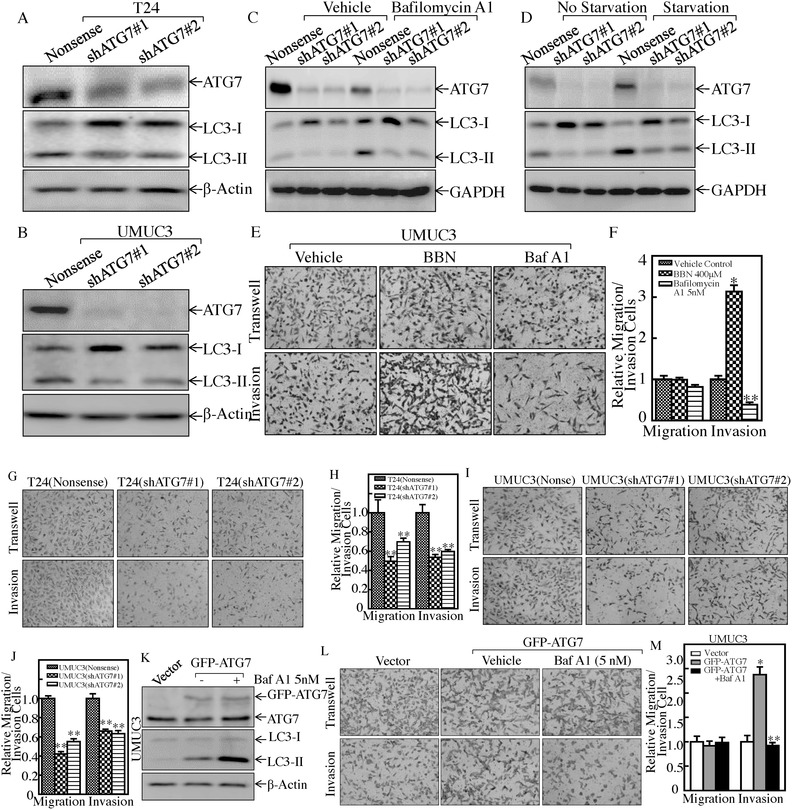Figure 3.

ATG7 overexpression and its mediated autophagy were crucial for BC invasion. A,B) Knockdown constructs of ATG7 were stably transfected into T24 and UMUC3 cells, respectively. Western Blot was used to detect the knockdown efficiency of ATG7 protein and autophagy activity. C) The indicated cells were treated with or without Baf A1 for 24 h, and the cell extracts were subjected to Western Blot to determine protein expression, as indicated. D) The indicated cells were cultured in either 10% fetal bovine serum (FBS) medium (no starvation) or 0.1% FBS medium (starvation) for 24 h. The cell extracts were subjected to Western Blot to determine protein expression, as indicated. E,F) The invasive abilities of UMUC3 cells were determined in presence of 400 × 10−6 m of BBN or 5 × 10−9 m of Baf A1 using BD BioCoat Matrigel Invasion Chamber applied with the matrigel. After incubation for 24 h, the cells were fixed and stained as described in the Experimental Section. The migrated and invasive cells were photographed under an Olympus DP71 (E), and the number of the cells in each image was counted by the software “Image J.” The invasion rate was normalized with the insert control according to the manufacturer's instruction (F). The bars represent mean ± SD from three independent experiments. Student's t‐test was utilized to determine the p‐value; the asterisk (*) indicates a significant increase in comparison to vehicle control (*p < 0.05) (E), while the double asterisk (**) indicates a significant decrease in comparison to vehicle control (**p < 0.05). G–J) The invasion abilities of T24(shATG7), UMUC3(shATG7), and their nonsense transfectants were determined, **p < 0.05. K) UMUC3(Vector) and UMUC3(GFP‐ATG7) were treated with 5 × 10−9 m of Baf A1 for 12 h, and the cell extracts were subjected to Western Blot for determination of ATG7 overexpression and autophagic status. β‐Actin was used as a protein loading control. L,M) The invasion abilities of the indicated cells were determined in presence or absence of 5 × 10−9 m of Baf A1. The asterisk (*) indicates a significant increase in comparison to vector control transfectant (*p < 0.05), while the double asterisk (**) indicates a significant inhibition in comparison to vehicle control cells (**p < 0.05).
